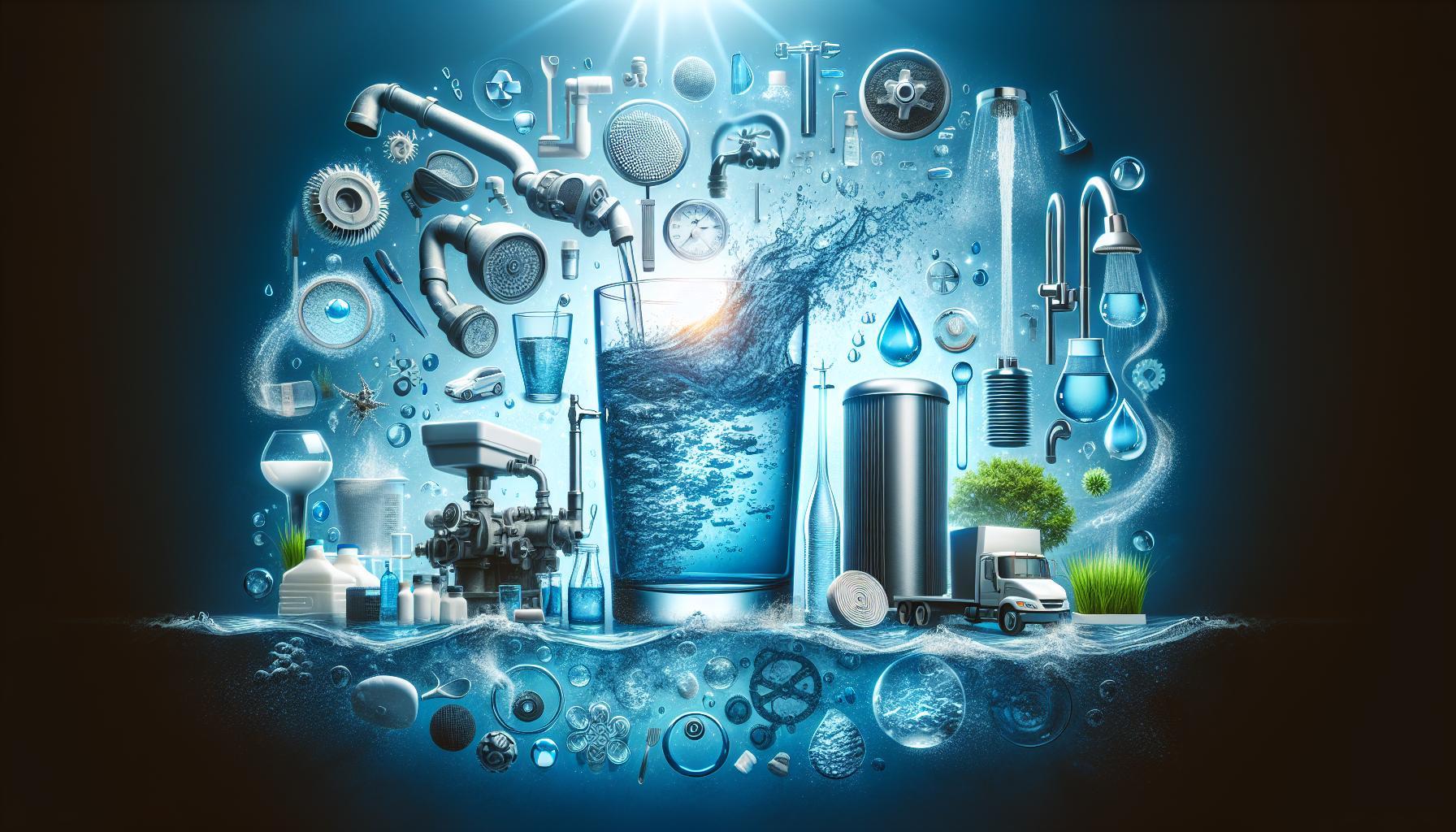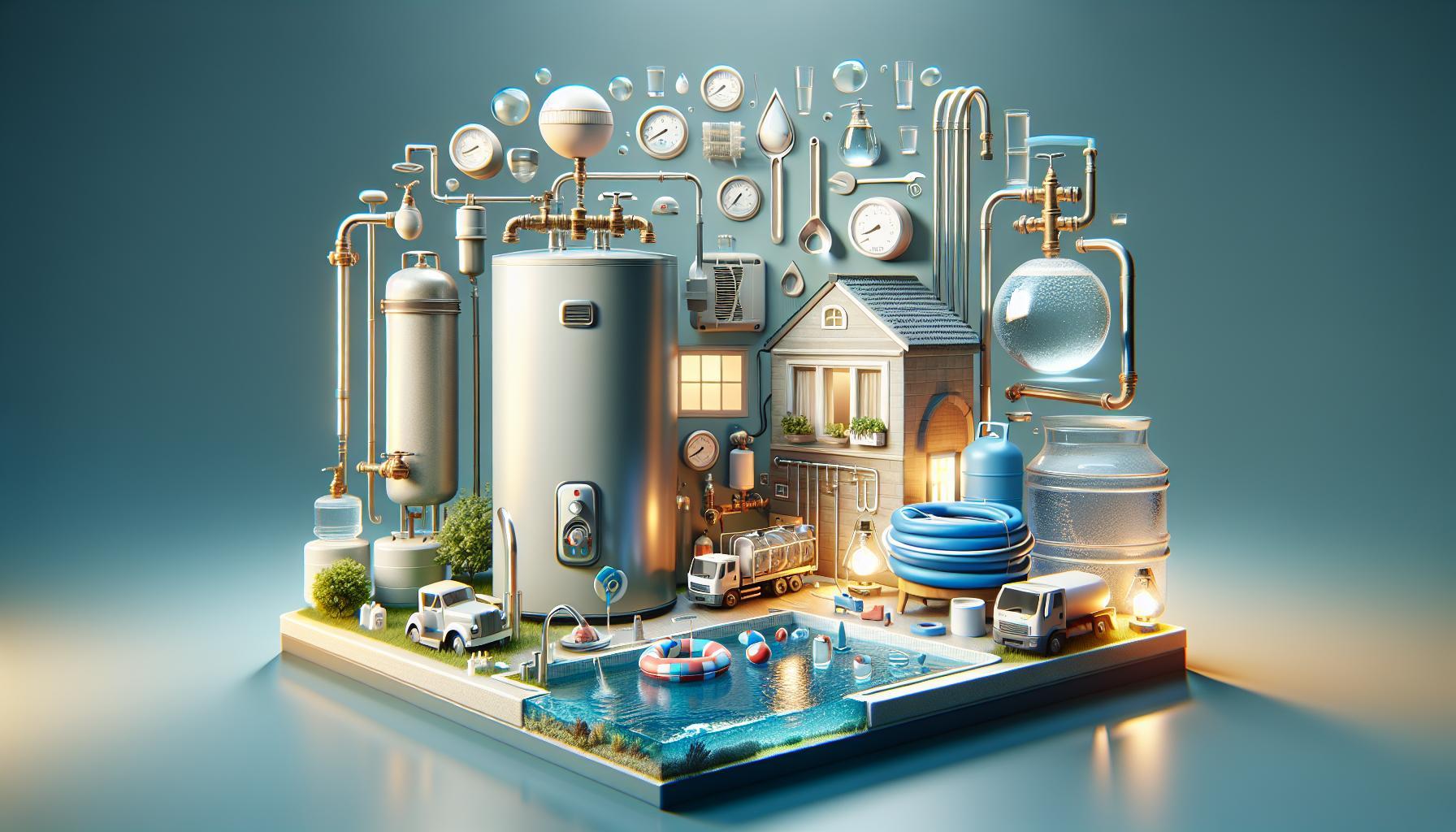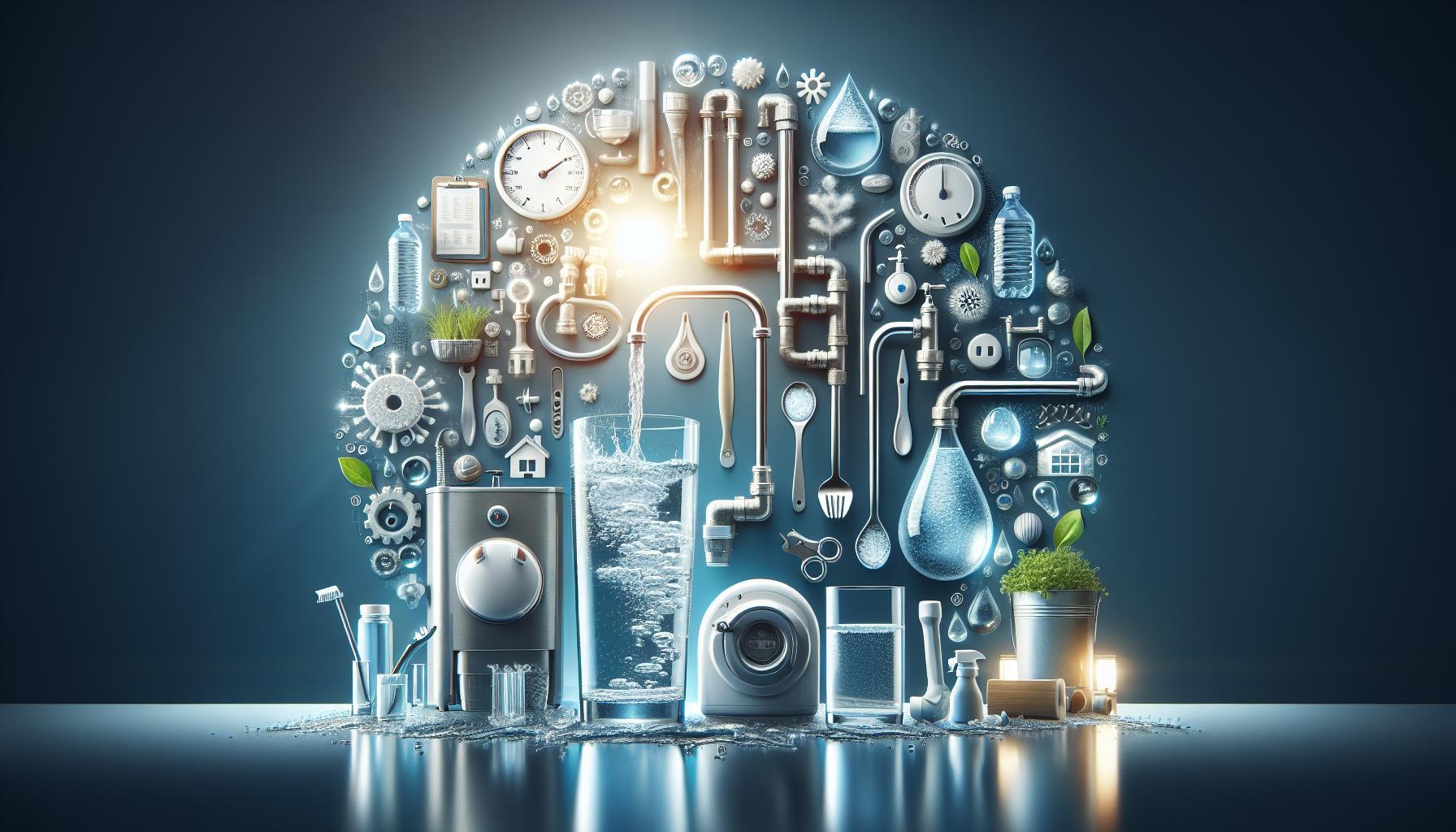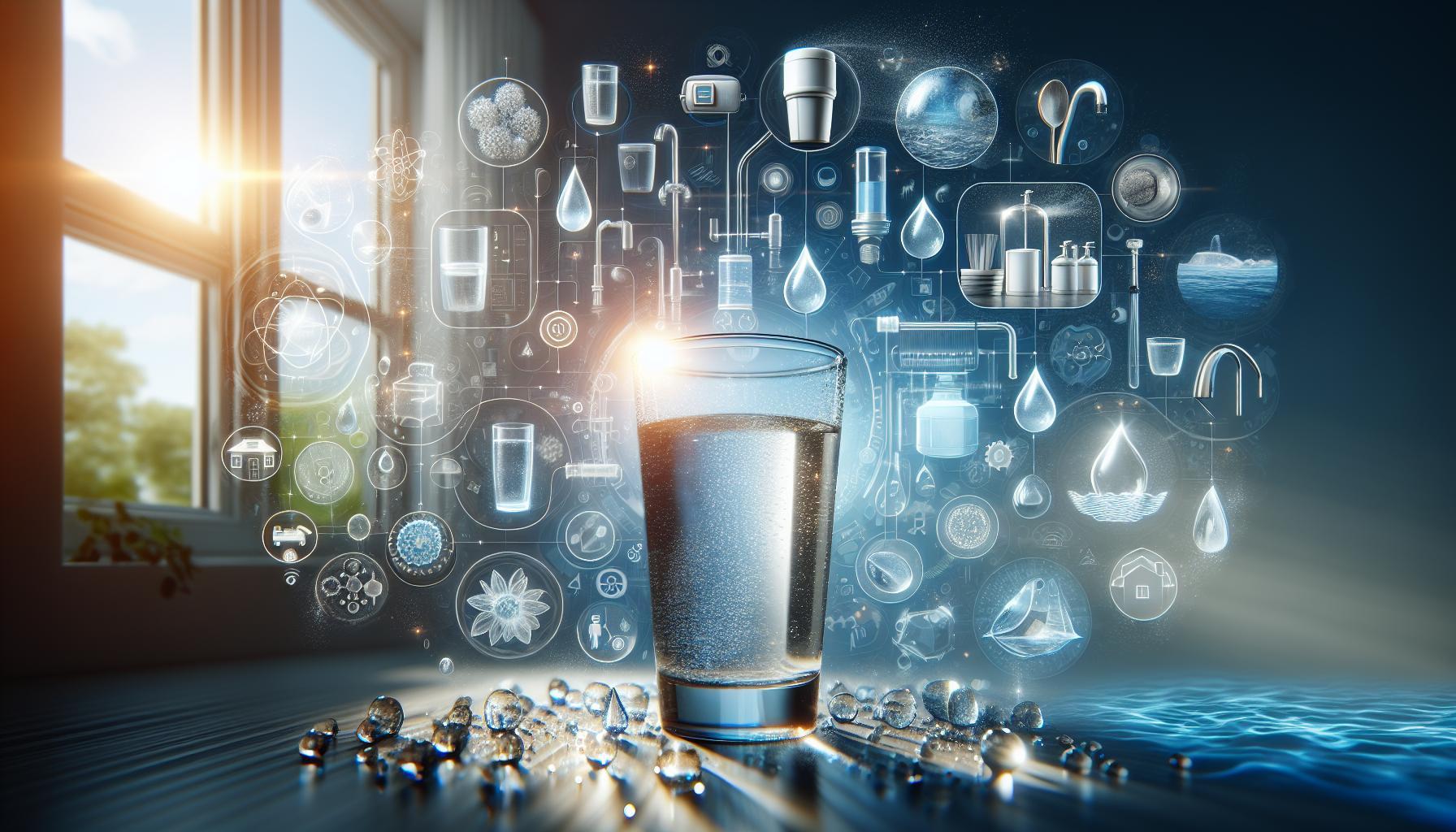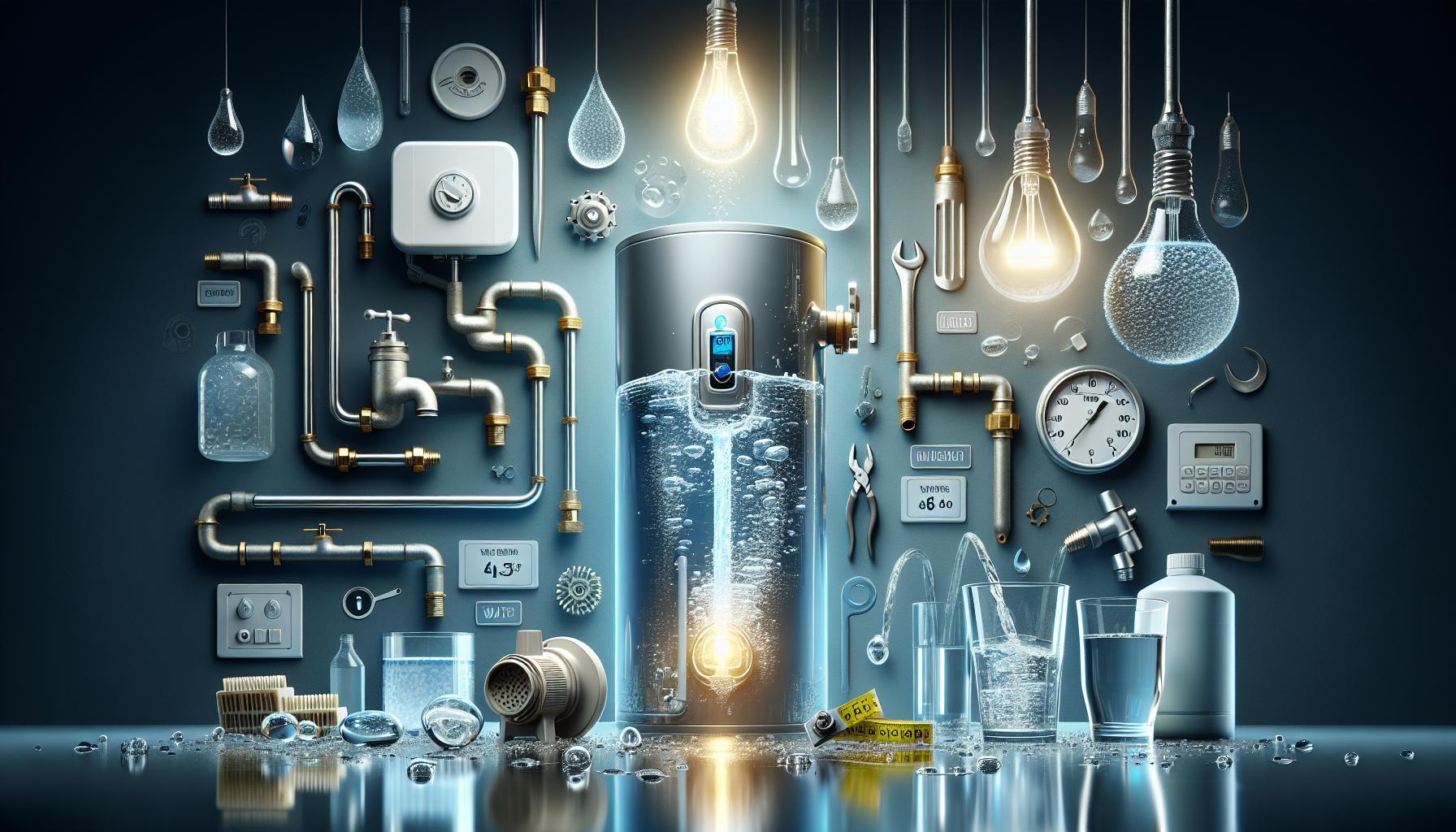Understanding the issue of water reversion in marine engines is crucial for any boat owner. This phenomenon, where exhaust pressure and water buildup allow seawater to flow back into the engine, can lead to significant engine damage. Identifying the causes and prevention methods is vital to maintaining engine health and performance on the water.
Understanding Reversion of Water in Marine Engines: A Simple Overview
Understanding how reversion affects marine engines is crucial for any boat owner or operator focused on performance and longevity. Reversion occurs when water makes its way back into the engine’s combustion system, often due to exhaust pressure or incorrect cooling procedures. This problem can lead to significant mechanical failures, including rusted components, engine stalling, or even catastrophic damage if not addressed promptly.
What Causes Reversion?
Reversion is primarily triggered by various factors, such as:
- Exhaust Pressure: When exhaust gases experience backpressure, it can cause water to flow backwards into the engine.
- Water Accumulation: If there is excessive water build-up in the exhaust system, this can lead to reversion, especially during periods of low engine RPM.
- Improper Cooling Systems: Inadequately designed cooling systems can exacerbate the issues of water entry into the engine.
Understanding these causes is essential for implementing measures to prevent reversion. Regular maintenance and inspections can help identify potential issues before they escalate.
Consequences of Water Reversion
Ignoring water reversion can lead to severe repercussions for marine engines, including:
- Hydraulic Lock: This occurs when water enters the combustion chamber and prevents piston movement, potentially breaking internal engine components.
- Oil Contamination: Water mixing with engine oil can lead to increased wear and tear, drastically shortening the engine’s lifespan.
- Corrosion: Moisture can cause rust and erosion in vital engine parts, leading to expensive repairs.
To mitigate these risks, boat owners should routinely check their exhaust systems and follow best practices for engine maintenance.
Prevention Strategies
To protect your engine from reversion, consider the following actionable strategies:
- Install a Quality Exhaust System: Choose exhaust components designed to minimize backpressure and prevent water intrusion.
- Regular Engine Checks: Perform routine inspections to look for signs of water entry or damage in the exhaust system.
- Improve Drainage: Ensure your vessel’s bilge and exhaust systems are appropriately draining water, especially after use.
By implementing these preventive measures, you can greatly reduce the risks associated with reversion of water in marine engines, ensuring smoother operation and longevity. Adopting these practices not only enhances engine performance but also saves boat owners from hefty repair bills down the line. Understanding reversion is not merely an academic concern—it’s a practical necessity for maintaining your marine equipment effectively.
How Reversion Affects Engine Performance and Efficiency
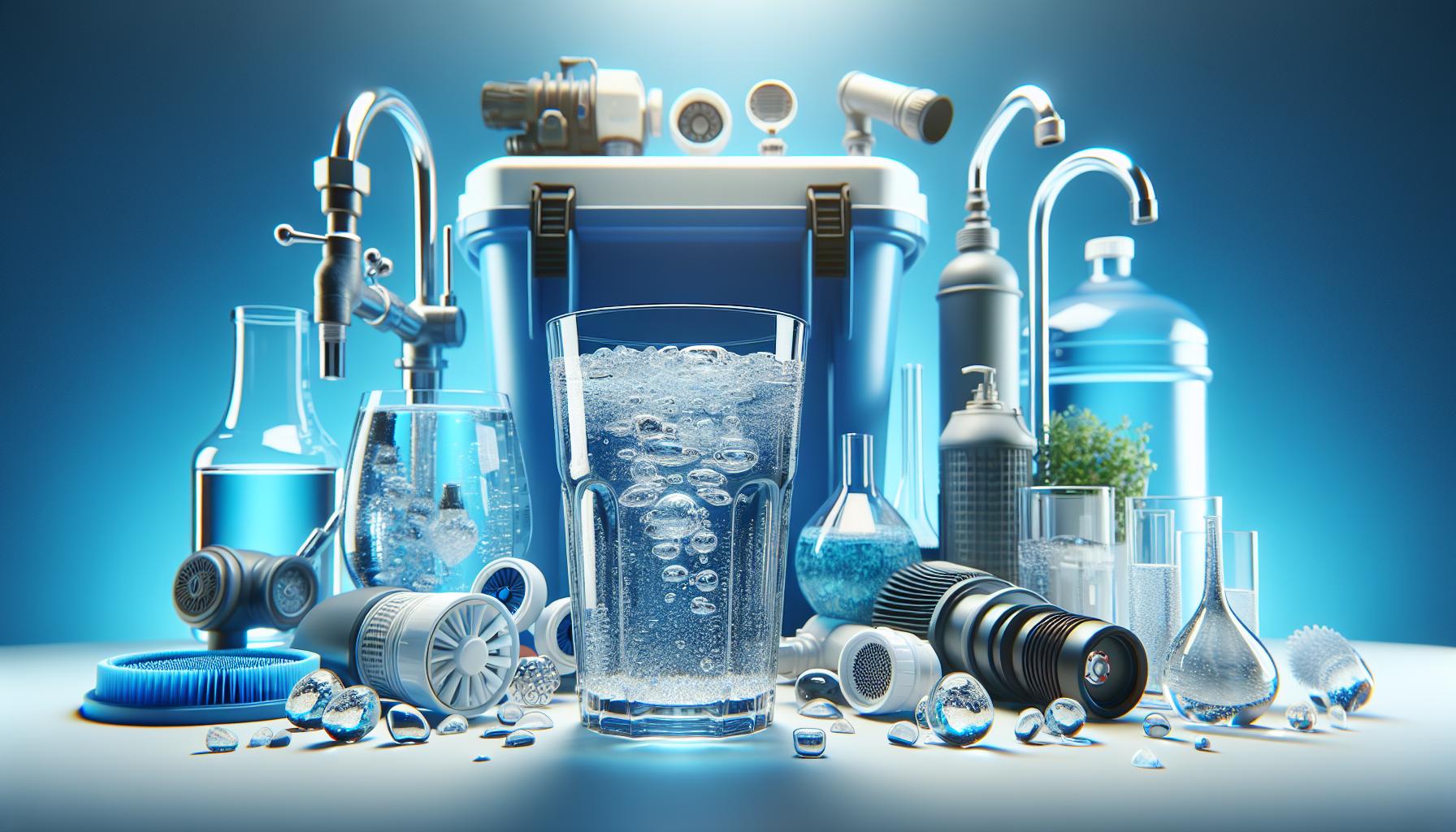
Engine performance and efficiency can significantly be impacted by the phenomenon known as reversion, particularly in marine engines where water and exhaust gases interact under specific conditions. This issue particularly surfaces during idle and shutdown phases, highlighting the importance of understanding how exhaust reversion can influence overall engine management and performance metrics.
When an engine experiences exhaust reversion, it causes exhaust gases to flow back into the intake manifold. This scenario can lead to various performance detriments, such as incomplete combustion and reduced power output. In marine applications, this can be particularly problematic, as the introduction of exhaust gases into the intake can disrupt the synchronization between fuel delivery and air intake, leading to issues like stalling or power loss. One critical aspect of this is the potential for added water in the exhaust stream, which can exacerbate these effects. When combined with idle operation, this reversion can severely affect engine performance, particularly as it can introduce moisture into the oil, facilitating rust formation and contributing to mechanical failure over time.optimizing exhaust manifold designs or employing advanced tuning techniques tailored to the specific engine and operating conditions. Moreover, utilizing appropriate fuel injection setups that avert excessive reversion can play a crucial role in maintaining engine efficiency and performance.[3]
Incorporating effective maintenance practices is equally important. Regular monitoring of the engine’s cooling and exhaust systems can prevent water intrusion that could lead to reversion-related issues. Through careful design considerations and routine checks, marine engine operators can significantly reduce the probability of performance loss due to reversion, ensuring reliable operation even under challenging conditions. By understanding these dynamics, stakeholders can make informed decisions to enhance engine reliability, performance, and longevity.
Common Signs of Water Reversion in Your Marine Engine
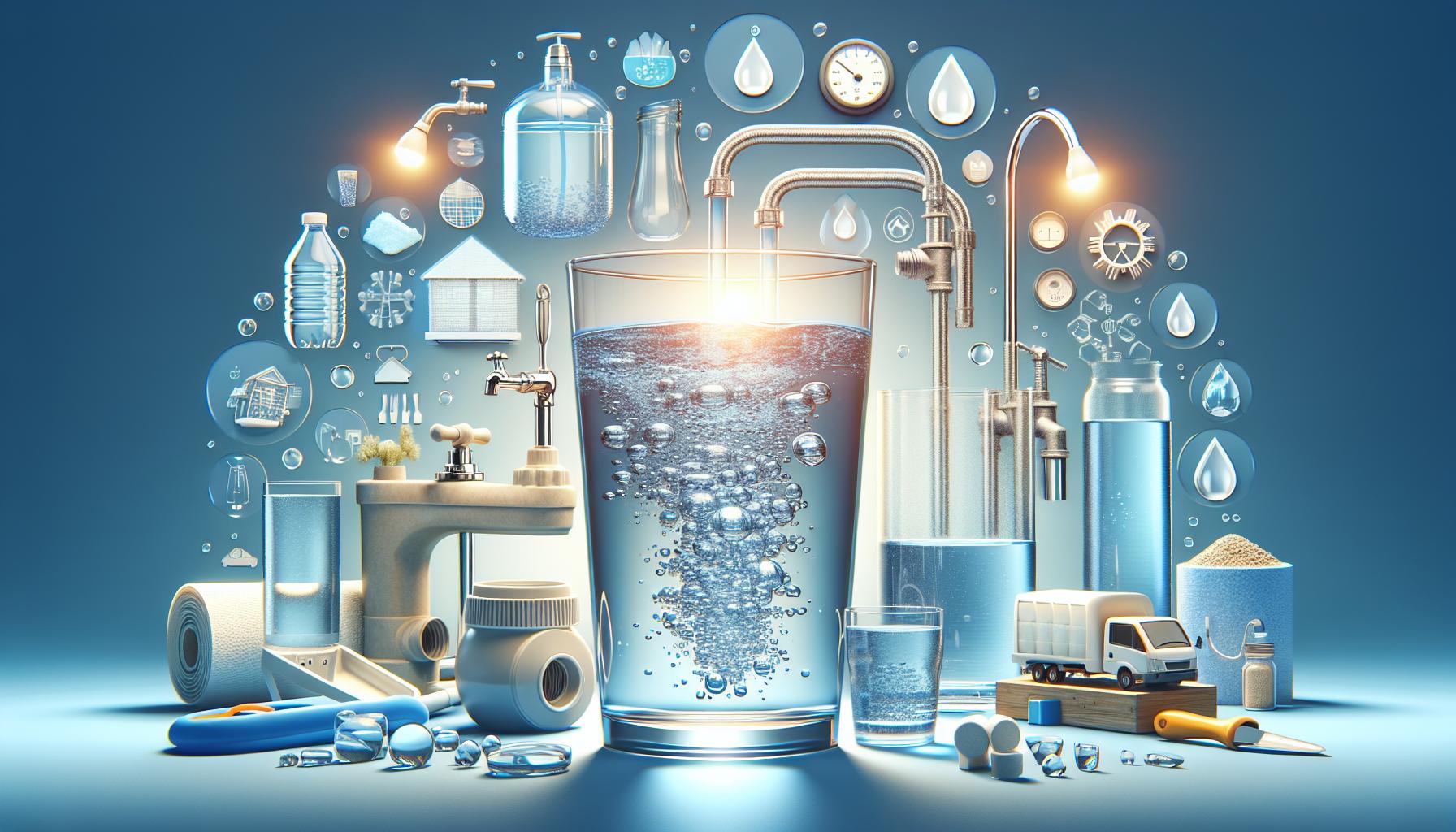
Experiencing water reversion in marine engines is more common than many boaters realize, and recognizing its symptoms early can save costly repairs and downtime. Water reversion occurs when water from the exhaust system flows back into the engine’s combustion chambers due to pressure fluctuations during normal operation. This phenomenon can lead to significant engine damage, making it essential for vessel operators to be aware of the key signs that indicate trouble is brewing.
One of the primary signs of water reversion in your marine engine is the presence of water in the oil. This often manifests as a milky or frothy appearance on the oil dipstick or within the oil reservoir. When this happens, it indicates that coolant or exhaust water has mixed with the engine oil, which can severely compromise lubrication and lead to engine wear. Observing oil discoloration should prompt immediate inspection and maintenance.
Another critical warning sign is excessive white smoke emanating from the exhaust. White smoke is typically a result of water being vaporized in the combustion chamber and indicates that water is entering where it shouldn’t. It’s especially concerning if this occurs after the engine has warmed up, suggesting persistent water intrusion. Regularly monitoring exhaust emissions can provide early cues about water reversion and help prevent long-term damage.
Additionally, a noticeable decrease in engine performance may signal impending issues. If you notice irregular idling, loss of power, or difficulty in maintaining speed, it may be indicative of an internal issue related to water reversion. Performance degradation can stem from various factors, including increased resistance caused by water in the fuel or engine cylinders.
To consider the potential ramifications of ignoring these signs, it’s vital for boat owners to take proactive measures. Regular maintenance, including thorough inspections of the cooling and exhaust systems, can help prevent conditions that promote water reversion. Furthermore, adhering to appropriate engine tuning characteristics, such as camshaft settings, can mitigate the risk of this issue occurring. Implementing these precautions can help ensure your marine engine operates smoothly and reliably.
By staying vigilant and attentive to these common signs, boaters can protect their marine engines from the detrimental effects of water reversion, ensuring safety and performance on the water.
Best Practices for Preventing Water Reversion Issues
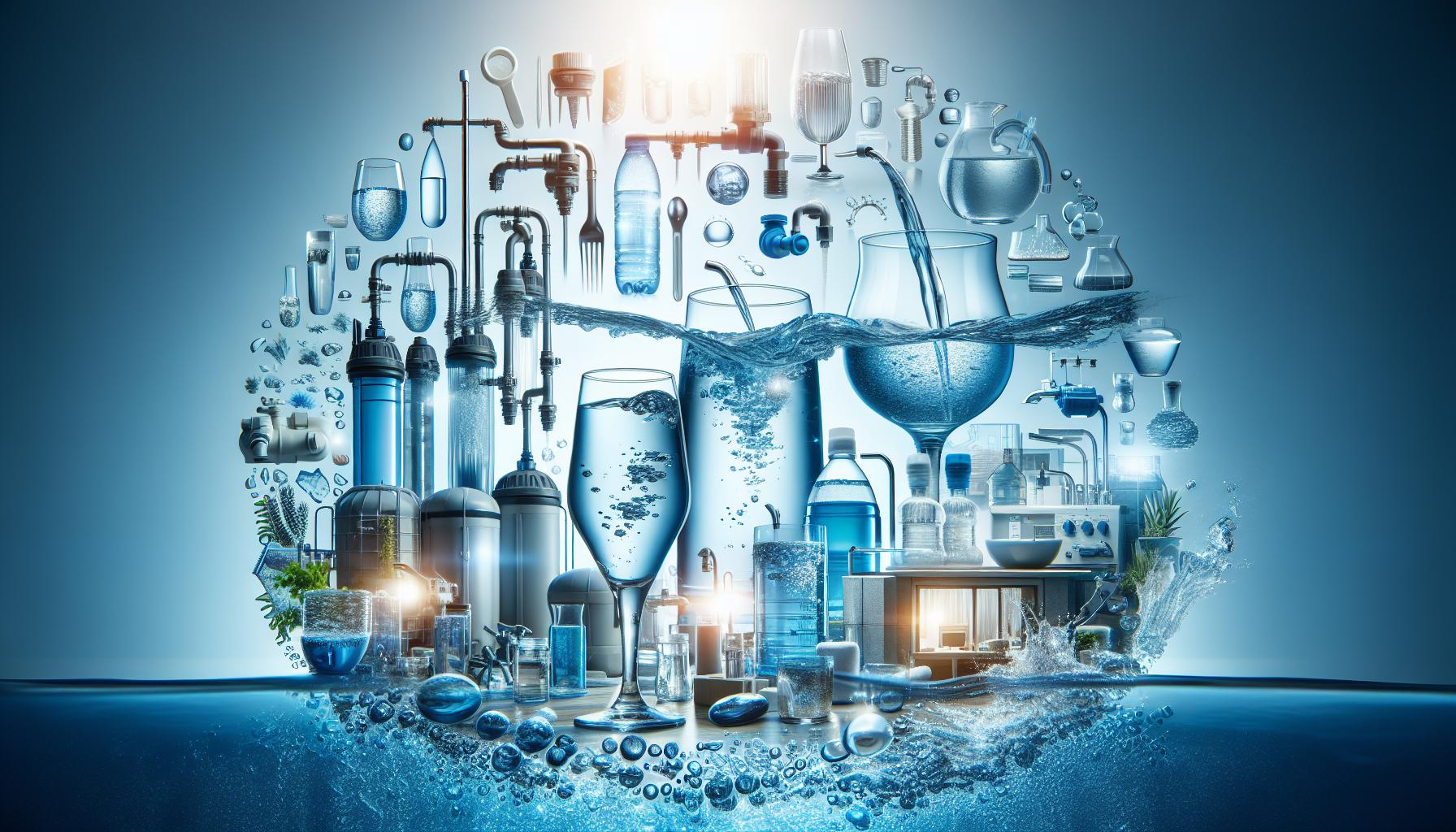
To safeguard your marine engine from the potential catastrophes associated with the reversion of water—such as hydro-lock—it’s vital to implement best practices that ensure a robust cooling system. Understanding how water can inadvertently enter the combustion chamber is the first step toward prevention. The increased focus on cooling system management in maritime training has already seen a decrease in operator errors, demonstrating the importance of education and vigilance in this area [[2]].
Regular Maintenance and Inspections
One of the most effective methods to prevent water reversion is through regular maintenance and thorough inspections. Ensure that your engine’s cooling system is free from leaks and blockages. This involves checking:
- Hoses and connections for signs of wear or damage.
- The engine’s exhaust system to ensure proper drainage.
- Seals and gaskets to prevent ingress of water.
Additionally, adhering to manufacturer recommendations for coolant types and blends will enhance overall engine efficiency and reduce the likelihood of water getting into the wrong places.
Operational Best Practices
Handling your marine engine with care during operation can significantly mitigate the risk of water reversion. After extended periods of idling, it’s advisable to rev the engine a few times to clear out any residual water that might have accumulated, particularly around exhaust valves. The ideal lobe separation angle (LSA) has been suggested to be between 109-112 degrees for marine engines, as it optimizes performance and minimizes water ingress risks. Keeping your engine at the right RPM can make a noticeable difference in expelling any unwanted water before shutdown [[[1]].
Invest in Quality Components
Investing in high-quality engine components is another proactive measure. Using superior exhaust systems designed to prevent backflow and using proper water separators can greatly reduce the chances of water reversion. Reinforcing engine components with reliable sealing can also create a barrier against moisture intrusion. Moreover, incorporating upgraded intake systems that effectively manage water entry can significantly enhance performance and longevity.
Implementing these best practices not only contributes to the operational success of your marine engine but also fosters a safer and more enjoyable marine experience. By focusing on preventative strategies in understanding the mechanics of water reversion, you can protect your investment and extend the life of your vessel.
Troubleshooting Water Reversion: What You Need to Know
Understanding the intricacies of water reversion in marine engines can prevent significant damage and costly repairs. Water reversion typically occurs during the engine’s shutdown phase, where a vacuum may form due to cooling and pressure differentials. This can inadvertently pull water back into the engine components, leading to potential damage if not addressed properly.
### Common Causes of Water Reversion
Several factors can contribute to water reversion in marine engines:
- Cooling System Design: A poorly designed cooling system can create conditions conducive to water reversion. Ensuring that the cooling pathways are clear and appropriately routed is essential.
- Piston Movement: As pistons slow and come to a halt, differentials in heat and pressure can allow water to migrate into areas it should not reach.
- Idle RPM Settings: If the engine idle is set too low, it can exacerbate reversion. Adjusting the idle speed can help mitigate this issue.
- Valve Spring Condition: Weak or failing valve springs may not seal properly, further allowing water to seep back into the engine.
### Solutions and Preventative Measures
To troubleshoot and correct issues related to water reversion, consider the following actionable steps:
- Check for Coolant Leaks: Regularly inspect hoses and fittings for signs of wear or leaks that could contribute to vacuum pressure.
- Inspect Valve Springs: Ensuring that valve springs are in good condition can help maintain sealing during the engine’s operation.
- Riser Modification: Upgrading to a higher riser or installing dry tails may help to reduce the likelihood of water flowing back into the engine.
- Routine Maintenance Checks: Regular checks of the engine’s cooling system and overall performance can help catch potential reversion issues before they escalate.
By implementing these strategies and keeping a close eye on the engine’s performance, boat owners can significantly reduce the risk of water reversion. Understanding the underlying principles of what leads to water reversion in marine engines empowers individuals to take the necessary preventive measures, ensuring longevity and performance of their marine engines.
The Role of Engine Design in Water Reversion Risks
The intricate design of marine engines plays a pivotal role in mitigating the risk of water reversion, a phenomenon where seawater inadvertently enters the engine’s combustion chamber. Understanding how design factors contribute to this risk is essential for both engineers and boat owners. Poorly conceived exhaust systems, for example, can create conditions in which water not only accumulates but is also forced back into critical engine components during shutdown or low-speed operation.
Impact of Engine and Exhaust System Design
A key factor in water reversion is exhaust reversion itself, which occurs when the engine’s exhaust flow reverses, pulling seawater into the exhaust system. This situation is exacerbated during low-speed operations or idling, as observed in various marine engines. Compact or improperly angled exhaust risers can trap water and lead to seawater ingestion, causing severe engine damage. When designing exhaust systems, ensuring adequate drainage and minimizing dead spots is crucial to prevent such occurrences.
- Exhaust Riser Design: Rizier configurations should facilitate proper drainage to avoid water pooling.
- Engine Idle RPM: Operating the engine at lower RPMs can increase the risk of reversion; thus, understanding ideal operating conditions is vital.
- Head Design: Cylinder head designs with optimal port geometry can reduce the chances of reversion during engine shutdown.
Real-World Examples
Marine engines such as the Volvo Penta 8.1L illustrate the implications of design on water reversion risks. Reports indicate that improper riser design can suck seawater droplets into the exhaust during low-speed operations, leading to catastrophic valve sticking and engine failure[3]. This highlights the importance of a well-engineered exhaust system that can combat water entry effectively.
Design Considerations for Mitigating Risks
To minimize the risk of reversion, engineers should prioritize specific design considerations during the development of marine engines:
| Design Feature | Benefit |
|---|---|
| Optimized Exhaust Angles | Prevents water from pooling in risers. |
| Effective Drainage Systems | Allows for quick evacuation of water post-operation. |
| Enhanced Valve Seals | Reduces the likelihood of water entering combustion chambers. |
In conclusion, the design of marine engines is intricately linked to the risk of water reversion. By focusing on creating robust exhaust systems, enhancing engine architecture, and conducting thorough testing under various operational conditions, manufacturers can significantly reduce these risks. Understanding how design impacts reversion is crucial for ensuring engine longevity and performance in marine applications.
Expert Tips for Maintaining Your Marine Engine’s Water System
An often overlooked yet crucial aspect of marine engine maintenance is the water system, which plays a pivotal role in cooling and ensuring the engine operates efficiently. Understanding how to care for this system can greatly enhance the reliability and longevity of your marine engine. Routine maintenance not only prevents common issues, such as overheating and reversion of water but also protects your investment during those long days on the water.
Routine Inspection and Maintenance
Regular inspections of the water system can prevent larger problems down the line. Key areas to focus on include:
- Water Pump: Check the water pump for wear and ensure that the impeller is functioning properly. Replacing the impeller every 100-200 hours or annually is advisable to prevent pump failure and overheating due to inadequate water flow.
- Cooling Passages: Inspect and clean cooling passages regularly to avoid mineral buildup, especially in saltwater environments. This buildup can significantly hinder cooling efficiency, leading to potential engine damage.
- Hoses and Connections: Look for signs of wear or leaks in hoses and connections. Replace any parts that appear damaged to maintain optimal water flow.
Understanding the Risks of Water Reversion
Water reversion in marine engines can introduce serious complications, such as engine misfire or severe damage due to water entering the combustion chamber. To mitigate this risk, ensure that your exhaust system is properly sealed and that the exhaust risers are correctly positioned to prevent backflow. Monitoring the engine temperature closely can help in identifying any unusual behavior that might indicate a reversion issue.
Actionable Steps for Maintaining Your Water System
Implementing an effective maintenance routine involves practical steps:
- Flush the System: After each outing, flush your engine’s water system with fresh water to remove salt and debris, which can cause corrosion over time.
- Conduct Regular Oil Changes: Changing the engine oil and filters regularly will not just keep your engine oily but also helps in maintaining a clean water system by preventing contaminants from accumulating.
- Check for Proper Alignment: Ensure that all components of your water system are well aligned to facilitate smooth water flow and avoid unnecessary wear and tear.
Taking proactive steps to maintain the water system of your marine engine not only promotes better performance but also extends the lifespan of your equipment. By understanding the critical aspects of water system care, you can avoid the pitfalls associated with reversion of water in a marine engine.
Q&A
What is reversion of water in a marine engine?
The reversion of water in a marine engine occurs when water flows back into the engine through the exhaust system, leading to potential damage. This problem can cause serious issues, including corrosion and hydraulic lock, if not addressed promptly.
Reversion typically happens during low-speed or idle conditions. When the engine stops, pressure drops, and any water in the exhaust can be pushed back into the engine cylinders. It is critical to understand this phenomenon to prevent costly repairs and ensure engine longevity.
Why does reversion of water occur in marine engines?
Reversion of water occurs due to a combination of factors, including the design of the exhaust system and engine operations. Specifically, it can happen when the engine is running at low RPMs or during shutdown.
Inadequate drainage in the exhaust system can trap water, which may be pushed back into the engine when pressure changes occur. Understanding the underlying mechanics of this process is essential for maintaining your engine and avoiding substantial repair costs, often reaching $1 million to $3 million for hydrostatic lock incidents.
How can I prevent water reversion in my marine engine?
Preventing water reversion involves regular maintenance and careful attention to the engine’s cooling and exhaust systems. Ensuring proper drainage and avoiding prolonged idling can significantly reduce the risk.
Additionally, you might consider upgrading parts of your exhaust system or installing backpressure valves that minimize the potential for water to flow back into the engine. Proactive maintenance is essential to avoid the severe implications of water reversion.
What are the signs of water reversion in a marine engine?
Signs of water reversion include unusual engine noises, difficulty starting, and poor engine performance. Visible signs may also include water in the exhaust or puddles beneath the engine.
If you notice any of these symptoms, it’s crucial to have your engine inspected immediately to prevent further damage. Early intervention can save you significant costs and extend your engine’s life.
Can I fix water reversion once it happens?
Yes, water reversion can be addressed, but the method depends on the severity of the issue. Minor cases may involve draining the water and checking for damage, while more severe situations may require a complete engine inspection or repairs.
Consulting with a professional marine mechanic is essential to determine the best course of action. Regular maintenance can also help prevent future occurrences.
What damages can result from water reversion in a marine engine?
Water reversion can lead to significant damage, including rust, corrosion, and even engine failure due to hydraulic lock. If left unchecked, this can worsen over time, leading to costly repairs.
For example, water mixed with oil can damage bearings and other critical components, leading to further engine issues. Understanding these risks is vital for all marine engine operators.
Why is reversion more critical during engine shutdown?
Reversion is particularly critical during engine shutdown because the sudden drop in pressure allows water to push back into the engine more easily. This is when the exhaust system is most vulnerable.
Maintaining proper exhaust system design and ensuring that no water can collect in those critical areas can help mitigate this risk, especially during idle and shutdown periods.
To Wrap It Up
Understanding water reversion in marine engines is crucial for all boat owners and enthusiasts. It occurs when water inadvertently enters the engine’s combustion chamber, leading to potential damage. Key factors influencing reversion include engine design features like camshaft tuning and lobe separation angles. Addressing this issue involves regular maintenance practices, such as revving the engine after prolonged idling to clear any accumulated water [1[1][2[2].
By equipping yourself with knowledge and preventive measures, you can ensure your engine runs smoothly and efficiently. For those keen on diving deeper into this subject, exploring the innovative solutions and common challenges related to water reversion will empower you to better protect your marine investment. Stay informed and proactive to enjoy your time on the water without the worry of engine issues!

